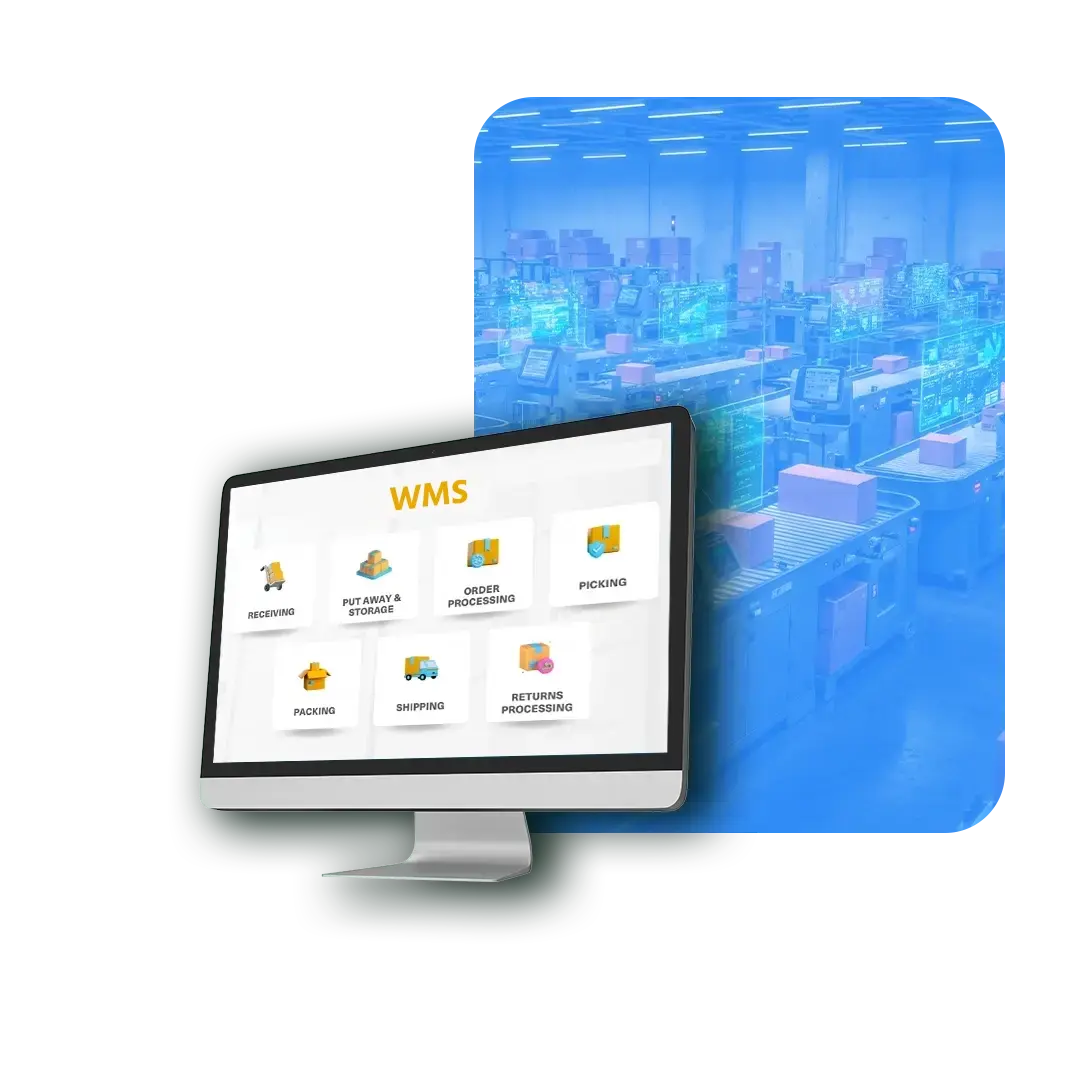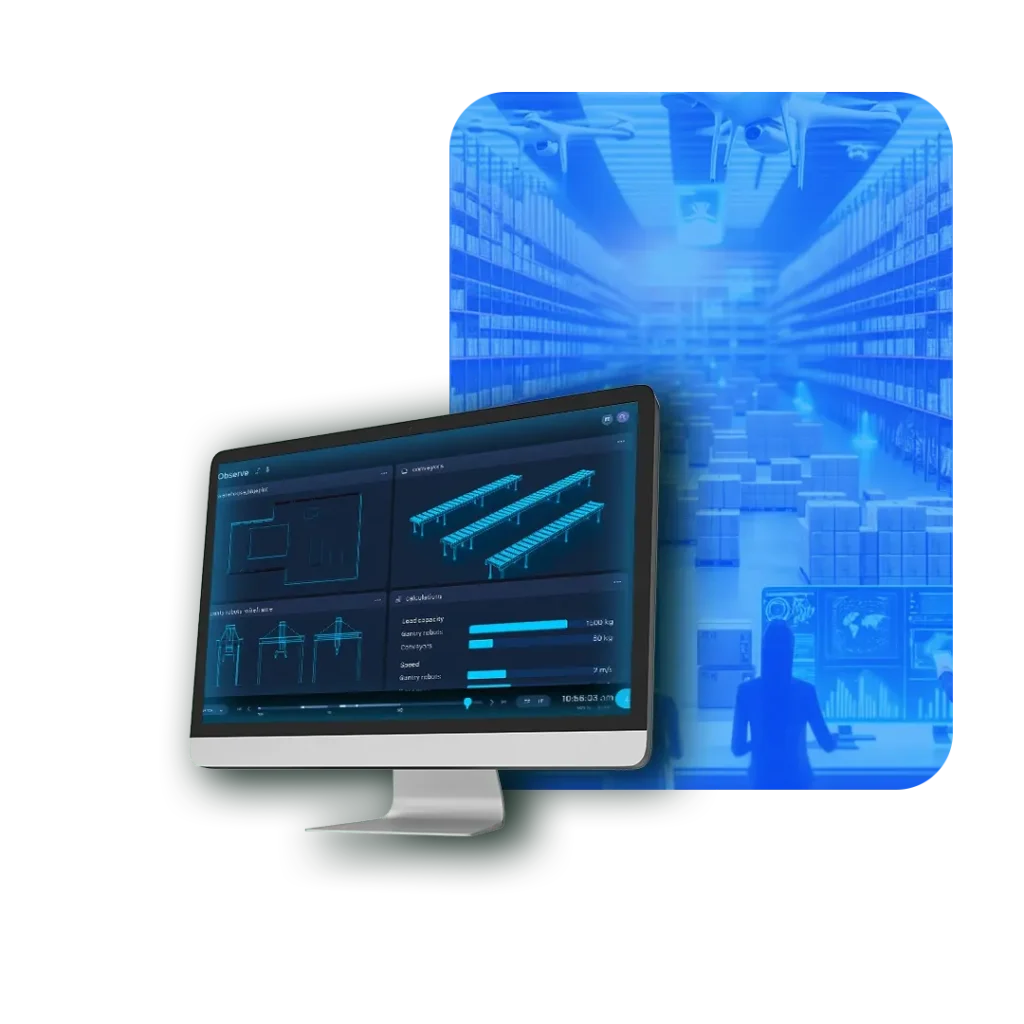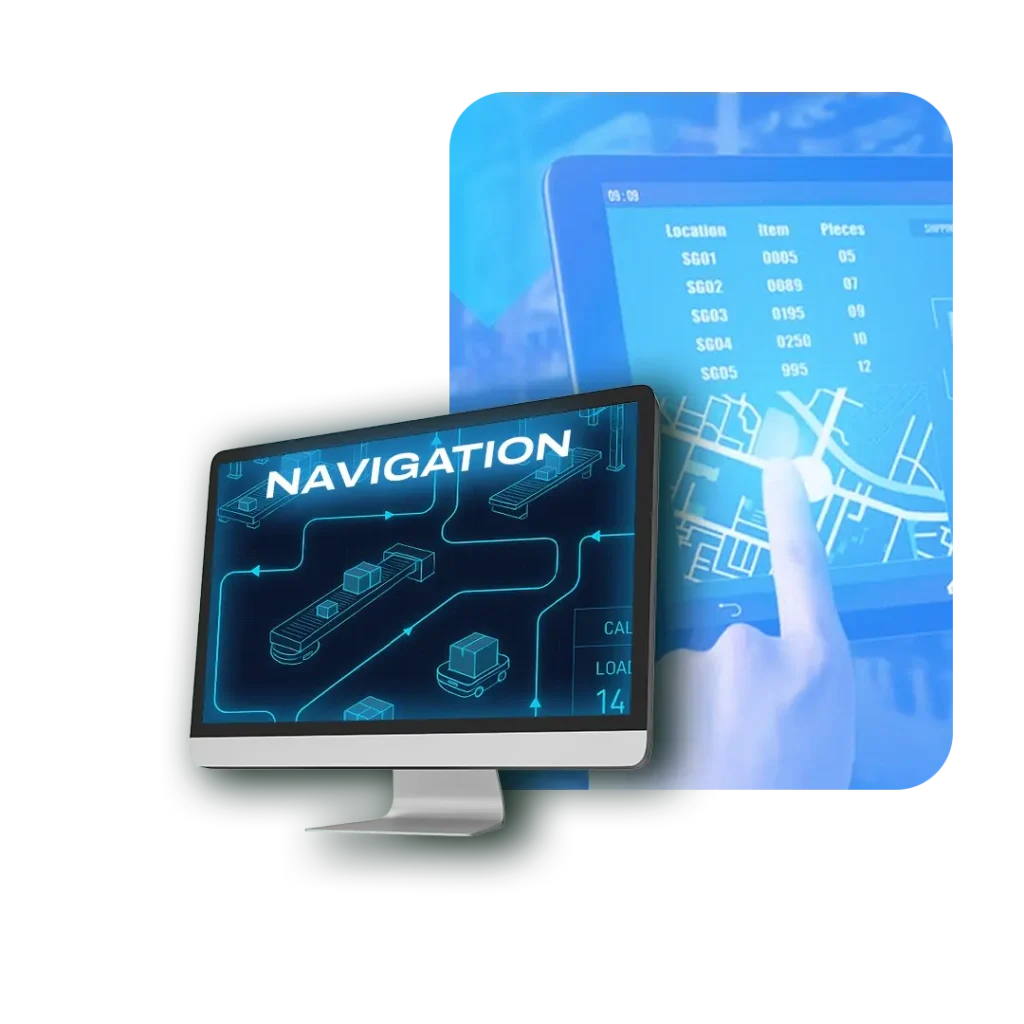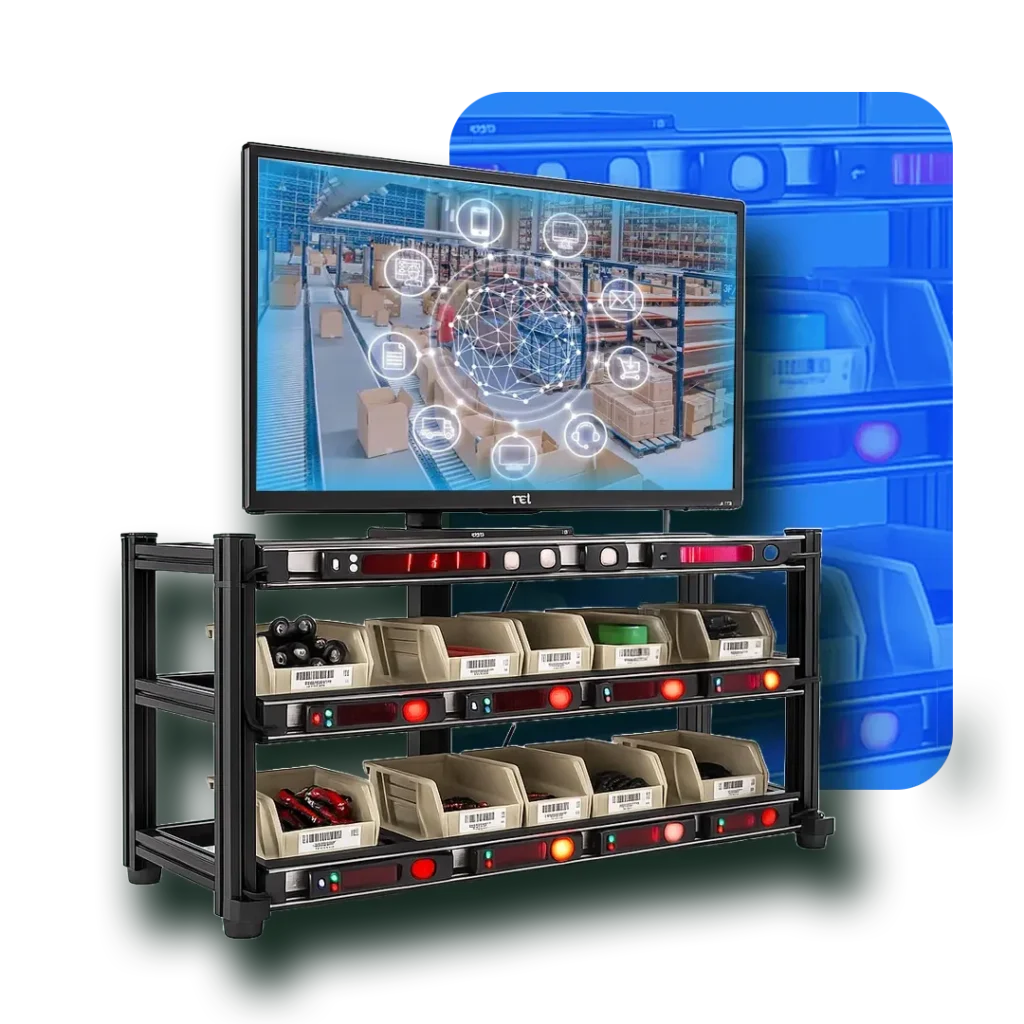
WMS
A Warehouse Management System (WMS) is an intelligent software platform that orchestrates, monitors, and optimizes all warehouse operations, from inventory management and order picking to receiving, putaway, packing, and shipping. By offering real-time visibility into stock levels, locations, and movements, a WMS helps companies improve accuracy, productivity, space utilization, and customer satisfaction.
Modern WMS platforms are cloud-based or hybrid, integrating seamlessly with ERPs, TMS, barcode/RFID systems, and automation equipment (like conveyors, sorters, and robots). Whether deployed in a small warehouse or a multi-location fulfillment network, a WMS automates workflows, minimizes manual errors, and accelerates order-to-ship cycles—making it essential for fast-moving logistics, retail, manufacturing, and e-commerce environments.
Inventory Visibility in Real-Time
Track SKU-level inventory across zones, bins, racks, and multiple facilities.Order Management & Fulfillment
Automate picking, packing, and shipping workflows using FIFO, LIFO, or custom logic.Multi-Location & Multi-Channel Support
Manage operations across warehouses, stores, and e-commerce channels from one dashboard.Barcode & RFID Integration
Real-time item tracking using handheld scanners, mobile devices, or fixed readers.Returns & Replenishment
Automate restocking, re-slotting, and return-to-stock logic based on live data.Analytics & Reporting
Actionable dashboards for monitoring productivity, order status, inventory accuracy, etc.Mobile & Cloud Ready
Access the WMS from anywhere with real-time syncing across devices.
| Parameter | Details |
|---|---|
| Deployment | Cloud / On-premise / Hybrid |
| Integrations | ERP (SAP, Oracle), TMS, WCS, Barcode/RFID |
| Access Platform | Web, Mobile App, Tablet |
| Inventory Accuracy | ≥ 99.5% |
| Picking Methods | Wave, Zone, Batch, Pick-to-Light, Voice, RFID |
| Reporting | Custom dashboards, alerts, historical logs |
| Compliance | GST, EDI, FDA, ISO, e-way bills (regional dependent) |
| API Availability | RESTful APIs for 3rd-party connectivity |
Applications

WCS
A Warehouse Control System (WCS) is a real-time software layer that acts as the central brain of warehouse automation, managing the movement and coordination of conveyor systems, sorters, robotic arms, ASRS, AGVs, and pick stations. Positioned between the Warehouse Management System (WMS) and physical automation equipment, a WCS translates high-level order data into machine-level instructions for seamless and synchronized execution.
WCS ensures that goods flow efficiently by orchestrating equipment behavior, resolving bottlenecks, assigning priorities, and rerouting items dynamically. It provides live status monitoring, error handling, and performance reporting—crucial for high-speed, high-accuracy operations in e-commerce, retail, 3PL, courier, and manufacturing environments.
Real-Time Equipment Control
Directs conveyors, sorters, lifts, pick stations, AGVs, and ASRS systems.Dynamic Routing & Load Balancing
Ensures optimal path selection, reduces congestion, and increases throughput.Integration with WMS & PLCs
Acts as the middleware between high-level order logic and low-level automation controls.Machine Monitoring & Alerts
Live dashboards show equipment status, faults, queue length, and exception handling.Order Execution Prioritization
Adjusts task sequencing based on carrier cut-off time, SKU urgency, or capacity.Modular & Scalable Architecture
Easily adapts to new zones, devices, or load increases without downtime.
| Specification | Details |
|---|---|
| Supported Systems | Conveyors, sorters, AGVs, ASRS, robots, pick-to-light |
| Integration Layer | PLCs, SCADA, IoT gateways, WMS/ERP |
| Response Time | Real-time (<50 ms latency) |
| UI Dashboard | Web-based HMI / SCADA-style panels |
| Communication Protocols | OPC-UA, Modbus, TCP/IP, MQTT, PROFINET, EtherNet/IP |
| Alert Handling | Email/SMS/Push notifications for faults or delays |
| Deployment | On-premises / Private Cloud |
| Security Compliance | ISO 27001, Role-based access, Audit logs |
Applications

Navigation Software
Navigation Software is the intelligent control layer that enables Autonomous Mobile Robots (AMRs), AGVs, and robotic arms to move seamlessly and safely within dynamic environments such as warehouses, manufacturing floors, and fulfillment centers. This software uses advanced algorithms—including SLAM (Simultaneous Localization and Mapping), LiDAR, vision systems, and inertial sensors—to allow robots to perceive surroundings, localize themselves, plan paths, and avoid obstacles in real time.
Whether it’s for path optimization in an e-commerce warehouse, lane following in an assembly line, or dynamic re-routing in a 3PL facility, navigation software ensures safe, efficient, and autonomous movement. It integrates with WMS/WCS systems, handles multi-robot traffic coordination, and supports map updates based on environmental changes.
Real-Time Localization & Mapping (SLAM)
Robots build and update maps dynamically using LiDAR, vision, and sensor fusion.Path Planning & Dynamic Obstacle Avoidance
Calculates the most efficient path and reroutes on-the-fly around humans or moving equipment.Multi-Robot Coordination
Prevents traffic jams with intelligent scheduling, right-of-way, and zone locking.Fleet & Task Management Integration
Assigns tasks to the most appropriate robot based on availability, location, and payload.Flexible Deployment
Works in structured and semi-structured environments without physical infrastructure like markers or QR codes.Real-Time Visualization
Web or mobile dashboard to monitor robot status, location, map updates, and alerts.
| Specification | Details |
|---|---|
| Localization Method | SLAM (LiDAR + IMU + Vision), GPS (for outdoor AGVs) |
| Accuracy | ±10–20 mm (indoor applications) |
| Path Planning | A*, RRT, Dijkstra, Hybrid A* (configurable) |
| Obstacle Detection | Real-time using LiDAR, ultrasonic, infrared sensors |
| Environment Type | Indoor, semi-outdoor, dynamic layouts |
| Robot Types Supported | AMRs, AGVs, forklifts, towing vehicles, pallet shuttles |
| Interface Protocols | ROS, MQTT, OPC-UA, REST API |
| Platform Compatibility | Linux, ROS2, Docker, edge IoT devices |
| Visualization Tools | Web GUI, 3D map viewer, fleet dashboard |
Applications
Pick to Light
A Pick to Light (PTL) system is a highly efficient, visually guided order picking solution designed to increase speed, accuracy, and productivity in warehouse and distribution environments. It uses LED light indicators and digital displays mounted on storage racks or bins to direct operators to the exact location of an item and show the quantity to pick—eliminating guesswork and paper-based picking.
By dramatically reducing search time and human error, Pick to Light systems are ideal for high-volume, high-SKU operations such as e-commerce fulfillment, kitting, and retail distribution. PTL can function as a standalone system or be fully integrated with Warehouse Management Systems (WMS) or ERP platforms to provide real-time inventory updates and order tracking.
Visual Picking Guidance
Lights and displays point operators to the right product and quantity instantly.Hands-Free, Paperless Operation
Boosts speed by eliminating the need for handheld scanners or paper lists.Real-Time Order Updates
Instantly reflects pick confirmations and inventory changes in WMS/ERP.Multi-Zone Capability
Supports multiple zones with simultaneous picking across departments or floors.Easy Scalability
Add or reconfigure pick faces quickly as product lines expand or change.Error Prevention Alerts
Audible and visual alerts notify operators of incorrect actions or missed picks.
| Specification | Details |
|---|---|
| Display Type | Alphanumeric LED (1–4 digits), color-coded lights |
| Communication Protocol | Ethernet, CAN bus, Modbus, or wireless options |
| Pick Confirmation | Push button, touch sensor, or hands-free proximity |
| System Speed | Pick rate of 600 picks per hour per user |
| Integration Options | Compatible with WMS, ERP, and middleware platforms |
| Power Supply | 24V DC or POE (Power over Ethernet) |
| Mounting | Rack, shelf, bin, flow rack, or mobile cart mounted |
| Error Rate | Typically reduced to <0.1% with guided logic |
Applications









